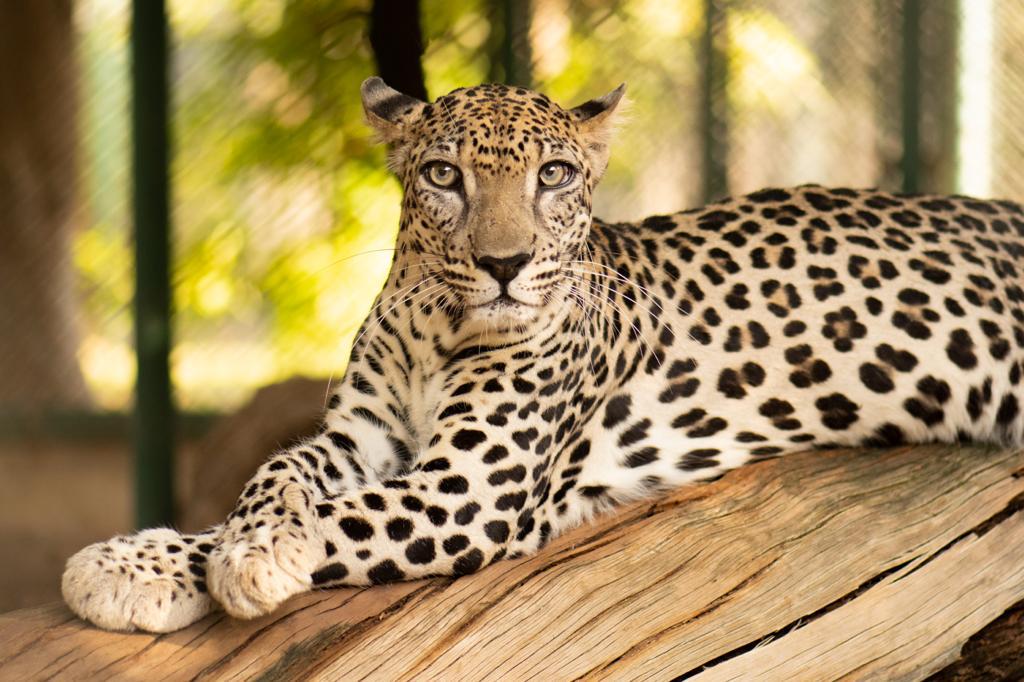Arabian Leopard's Genome Sequenced, a Subspecies with Signs of Extinction in Its DNA
An international team led by IBE has identified indications of genetic decline in the genome of the Arabian leopard.
The research has managed to gather the largest genomic database of leopards to date, including de novo sequencing of the complete genome of two Arabian leopards.
Phylogenetic analyses from the study suggest that the Arabian leopard is closer to Asian leopards than to African leopards, contrary to previous beliefs.
These findings could be crucial in reconstructing the evolutionary history of the leopard and effectively guiding conservation efforts for the critically endangered Arabian leopard.

The leopard is one of the most iconic and recognizable species today. Throughout history, this predator has managed to adapt to a wide range of ecosystems in Africa, Europe, and Asia. Despite its iconic status, little is known about this species. Among its eight-current subspecies, one of the least-studied is the Arabian leopard, Panthera pardus nimr. This subspecies, critically endangered, has only around 250 individuals distributed across Saudi Arabia, Yemen, and southern Oman. However, due to its geographical location between the two main clades of leopards (Africa and Asia), it's a key population for understanding the evolutionary history of these felines.
Now, an international team led by the Institute of Evolutionary Biology (IBE), a joint centre of the Spanish National Research Council (CSIC) and Pompeu Fabra University (UPF), has compiled the largest genomic database of leopards to date. The team has analysed the complete genome of two Arabian leopard individuals and has revealed concerning data about their genetic decline. The research clarifies the evolutionary history of the leopard, confirming that the Arabian leopard is a genetically distinct subspecies on the brink of extinction. The study also lays the foundations for conserving the populations of this threatened feline with the help of available genomic information.
The Arabian Leopard was the First to Reach Asia and Possibly Europe
Genomic analyses of nuclear DNA from two individuals suggest that the Arabian leopard is a sister group to Asian leopards. This study contradicts previous research based on mitochondrial DNA analysis, which is shorter and inherited exclusively maternally, that had observed a closer relation to the African leopard - the other major clade. The study's results suggest that the Arabian leopard might have initiated the leopard's expansion after the "Out-of-Africa" event into the rest of the Asian continent and possibly Europe.
The analysis of relatedness confirms that the Arabian leopard is a genetically distinct subspecies, which is of particular importance for directing conservation efforts.
The Decline of the Arabian Leopard is Evident in its Genes
The team has identified clear signs of extinction in the feline's genes. "The greatest threat to the future of a species is the loss of genetic diversity," points out Salvador Carranza, lead of the study and principal investigator at the IBE. "Arabian leopard populations are getting smaller, and their high degree of isolation has led to inbreeding, endangering their viability."
According to the study, the observed lack of genetic diversity results from recent population declines. "These could have been caused by the aridity of the environment and human activity, which has degraded their habitat," adds Gabriel Mochales, the study's first author and predoctoral researcher at the IBE. The levels of genetic diversity in the analysed individuals place this Arabian subspecies close to the Asian Javan leopard (Panthera pardus melas), a small population characterized by strict insular isolation. "The absence of genetic diversity makes the population more vulnerable to environmental changes or the emergence of new diseases, like COVID," comments Mochales. The comparative genomics group, led by ICREA Professor Tomàs Marquès-Bonet of the IBE, also a professor at the UPF, participated in the study.
According to the study, the observed lack of genetic diversity results from recent population declines. "These could have been caused by the aridity of the environment and human activity, which has degraded their habitat," adds Gabriel Mochales, the study's first author and predoctoral researcher at the IBE.

A Step Forward for the Leopard's Future: Conservation Requires Genomics
Various leopard conservation programs are currently underway on the Arabian Peninsula. However, these captive breeding programs are not considering genomic data. "With this study, we have laid the groundwork for a genomics-informed conservation strategy for the critically endangered Arabian leopard", says Carranza, principal investigator of the Systematics, Biogeography, and Evolution of Reptiles and Amphibians group.
"With this study, we have laid the groundwork for a genomics-informed conservation strategy for the critically endangered Arabian leopard", says Salvador Carranza, principal investigator of the IBE.
"Genetic analyses in threatened populations are essential for assessing their vulnerability to extinction and managing conservation actions," adds Mochales. "In the future, efforts for the sequencing of all species and subspecies, as promoted by the Earth Biogenome Project (EBP), the European Reference Genome Atlas (ERGA), and the Catalan Biogenome Project (CBP), will be crucial for protecting the global heritage represented by all the genomes on the planet," Carranza concludes.
Referenced Article: Gabriel Mochales-Riaño, Claudia Fontsere, Marc de Manuel, Adrián Talavera, Bernat Burriel-Carranza, Héctor Tejero-Cicuéndez, Raed Hamoud M. AlGethami, Mohammed Shobrak, Tomas Marques-Bonet, Salvador Carranza; iScience; Genomics reveals introgression and purging of deleterious mutations in the Arabian leopard (Panthera pardus nimr). DOI: https://doi.org/10.1016/j.isci.2023.107481
